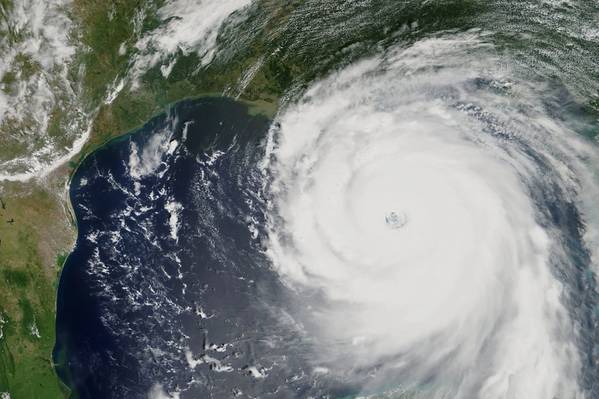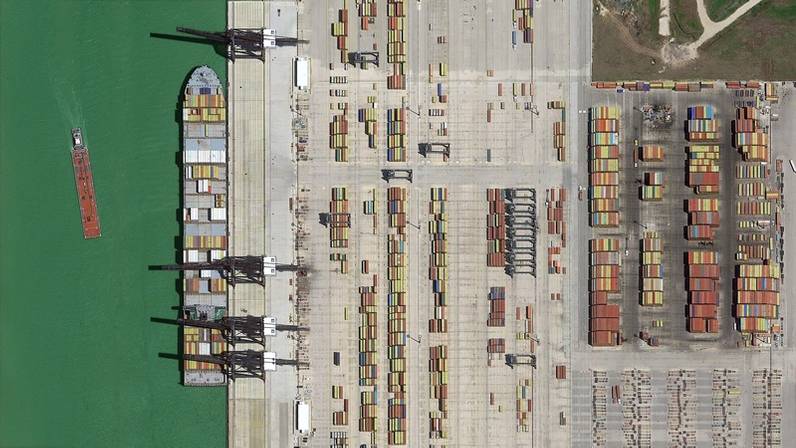
Shipping ports are crucial for the global economy. They handle the majority of trade, are industrial and transportation hubs and provide employment. But ports, by their nature, are located in coastal areas or on large rivers and are exposed to natural hazards such as storms and floods as a result.
Natural hazards can cause damage to ports and their surrounding infrastructure, often disrupting a port’s operation. Hurricane Katrina, a category five storm that made landfall on the southern U.S. coast in 2005, forced the U.S. ports of New Orleans, Mobile and South Louisiana to close for up to four months. The ports together handled almost half of the country’s agricultural exports at the time.
Scientists refer to the physical damage caused by natural hazards and the monetary loss associated with port closures and reconstruction as “climate risks”. Recent research conducted by my colleagues and I analysed the climate risks facing 1,340 of the world’s largest ports in terms of trade flow, including Rotterdam in western Europe, Houston in the U.S. Gulf of Mexico and Singapore and Shanghai in Asia. We estimate the total climate risk to ports, most of which is attributed to tropical cyclones and river flooding, to be worth $7.6 billion each year.
Large ports in Asia, the Gulf of Mexico and western Europe face the highest damage costs. But, although smaller in absolute terms, asset damage and trade losses are likely to be most disruptive in small island developing states such as Guam in the western Pacific.
The cost of natural hazards
Our research combined a global database of port infrastructure assets with detailed information on natural hazards and local “marine extremes”. Marine extremes refer to factors including wind speeds, waves and air temperatures that are specific to particular locations.
We found that 86% of all ports studied may be impacted by more than three types of natural hazard each year, while 50% could be exposed to four or five. Marine extremes are instead likely to cause operational disruption at around 40% of all ports.
The damage caused by natural hazards varies across all of the ports studied. The risk of damages exceeding $10 million each year affected 160 ports. Yet 21 ports, including Houston, Shanghai, Lazaro Cardenas in Mexico and Rouen in France, are at risk of annual damage exceeding $50 million.
These ports are located in regions prone to natural hazards. But, as some of the world’s largest ports, they contain a high concentration of valuable assets and are important centres for international trade. Our research revealed that port closures and reconstruction following natural hazards puts $67 billion of trade at risk every year.
The Port of Houston, for example, is the second largest port in the U.S. But as the port is located in the Gulf of Mexico, it experiences frequent extreme weather. In 2017, Hurricane Harvey disrupted the Port of Houston’s operations for around 10 days.

An aerial photo of a container ship docked at the Port of Houston. © gokturk_06 / Adobe Stock
Port closures are a particular issue for small island developing states. These economies are often highly dependent on maritime trade as their limited land mass and resources require that they import virtually everything.
These states also often have lower hazard protection standards and their ports rely on outdated infrastructure. Natural hazards therefore cause severe disruption.
In 2018, Typhoon Yutu forced port operations to close for almost a week at all ports in Guam and the Northern Mariana Islands. The port closures disrupted trade flows and prevented humanitarian supplies from entering the islands.
Preparing for extreme weather
Ports in all countries require infrastructure upgrades that will improve their resilience to hazards and allow them to remain operational all year. This includes upgrading structures like breakwaters to shelter ports from higher waves and installing port equipment that can function under higher wind speeds.
The Asian Development Bank is financing a range of initiatives to improve outdated and inefficient port infrastructure across the Pacific.
A project is underway to install stronger foundations and raise the deck level of Papua New Guinea’s Alotau port. And Apia Port, the only international gateway for freight in and out of Samoa, has received finance to reconstruct its breakwater and terminal infrastructure.
 Breakwaters shelter ports from waves. © Ian / Adobe Stock
Breakwaters shelter ports from waves. © Ian / Adobe Stock
But given the large size, and value, of ports in richer countries, greater investments will be required to reduce the threat of natural hazards in these areas. Previous research suggests that up to $63 billion will be required overall by the end of the century to raise the height of the world’s existing port terminals. Measures such as these are technically challenging and can be prohibitively expensive.
Many port authorities also fail to consider climate change in their long-term planning at present. But climate change will contribute to increasingly severe weather and rising sea levels in the future. One study estimates that if an event the size of Hurricane Katrina were to affect Alabama’s Port of Mobile in 2100, the damage to infrastructure could be up to seven times higher.
Ports are at the forefront of extreme weather and adaptation is urgently needed. Quantifying this risk will guide investment to the ports that need it most.
The author
Jasper Verschuur, DPhil Student, University of Oxford
(Source: The Conversation)



